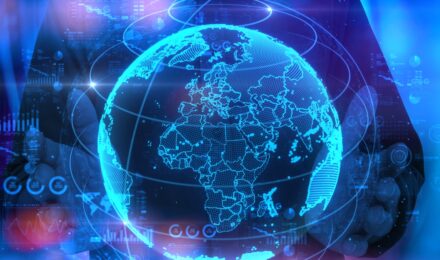One of humanity’s most significant innovations is technology. Defined as the application of scientific knowledge for practical purposes, technology drives the creation of machines, devices, and methods that make life more efficient. Some examples include computers, cars, smartphones, X-ray machines, and more.
For years, technology’s continuous evolution has shaped the world, and its influence shows no signs of slowing down. While many embrace these changes, the role of technology in our society sparks debate, particularly over its benefits and downsides. This article explores how technology has transformed society, touching on both its positive and negative impacts.
Communication
Technology has revolutionized the way we communicate, making it faster, clearer, and more efficient than ever before. Before the advent of telephones and modern communication tools, people relied on messengers, smoke signals, drums, and other traditional methods, which were often slow and unreliable. Today, we can communicate across continents in real time, whether through video calls or simple voice calls.
Social media, another technological breakthrough, offers countless benefits when used wisely, fostering global connectivity and idea-sharing. However, alongside its benefits, social media also presents risks, such as cyberbullying, identity theft, and the growing addiction to screens.
Research
Research is essential for discovering new ideas and refining existing ones. In the past, gathering information was a cumbersome process due to its decentralized nature. Technology, however, has centralized information, making it more accessible and shareable across computers.
In addition, advancements in technology allow for virtual experiments and simulations, enabling faster and more accurate results than traditional trial-and-error methods. For example, instead of testing a new drug on human subjects, researchers can run a simulation that predicts the effects. While this has increased efficiency, it has also introduced challenges, such as the rise of identity theft and the spread of misinformation.
Education
Education, a cornerstone of personal and societal growth, has become more accessible and engaging thanks to technology. Today, knowledge is just a click or swipe away on mobile devices or computers. The internet has made learning more affordable and accessible to people everywhere, offering opportunities for self-paced education.
Platforms like YouTube, TikTok, and social media have further enhanced the learning experience by enabling the exchange of ideas and solutions to everyday problems. Technologies like virtual reality (VR) and artificial intelligence (AI) are also bringing immersive, hands-on learning to fields like science. Despite these benefits, the reliance on technology has raised concerns about decreased attention spans and overdependence on gadgets, especially among younger generations.
Healthcare
The healthcare sector has greatly benefited from technological advancements. AI-assisted clinical trials, cutting-edge medical devices, and centralized healthcare systems have improved the quality of care.
Wearable technology, such as diabetes monitors and health rings, helps individuals monitor their health in real time. These devices can track vitals, send medication reminders, and alert users when it’s time to visit a doctor. Centralized healthcare data also allows medical professionals to share patient information more easily, leading to better diagnoses and treatments. However, the rise of cyberbullying and excessive screen time has been linked to mental health issues, vision problems, and reduced attention spans.
Equal Opportunities
Technology has played a significant role in creating equal opportunities, particularly through automation in various industries. Automation has made it possible for people with disabilities to work in sectors that were once inaccessible, such as manufacturing and processing.
Higher education has also become more attainable, allowing individuals from all backgrounds to pursue top-tier jobs that were once considered exclusive. However, this shift has also led to job losses, particularly among semi-skilled and unskilled workers, as automation replaces human labor in certain industries. This job displacement has contributed to rising unemployment rates and, in some cases, higher crime levels as people struggle to find new work.
Conclusion
Technology has undeniably transformed our lives, changing how we communicate, travel, research, learn, and entertain ourselves. Its benefits are vast, but with them come new challenges. As we continue to enjoy the conveniences of technology, it’s crucial to ensure we use it responsibly to enhance, rather than undermine, our shared human experience.



